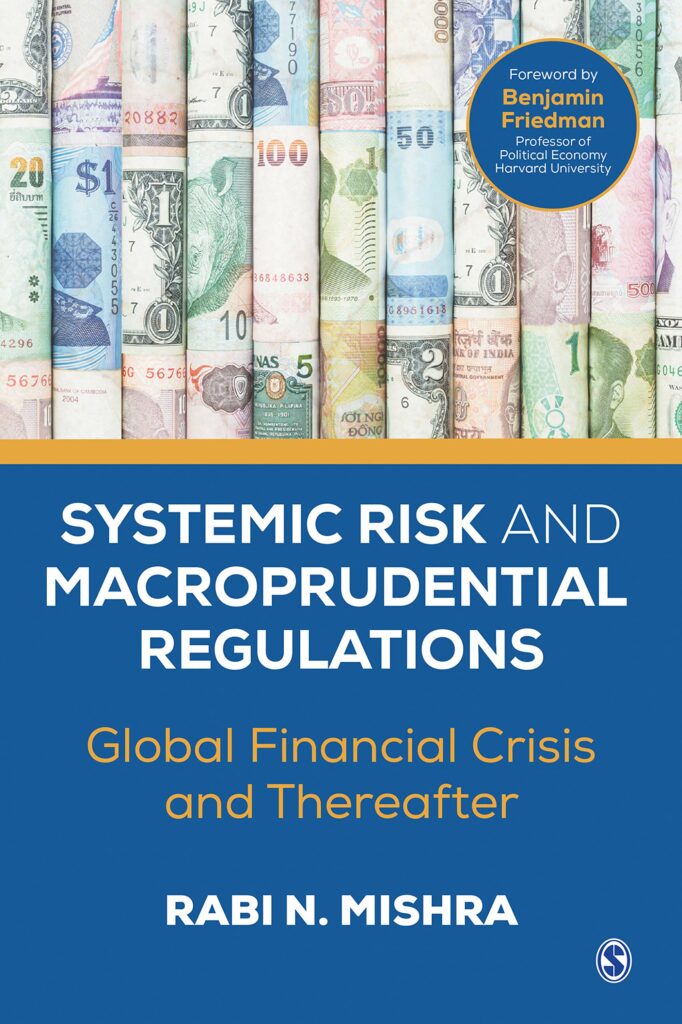Bhaskar Parichha

The financial crisis of 2007–2008, also known as the global financial crisis, has been analyzed by a number of experts offering distinct narratives and counter-narratives. The severe worldwide economic crisis is considered to be the most serious one since the Great Depression of the 1930s. It began in 2007 with a catastrophe in the subprime mortgage market in the United States. It was a full-blown international banking crisis resulting in the collapse of the investment bank Lehman Brothers around this time eleven years ago.
A new book on this historical financial crash examines the causes and consequences while proposing a regulatory reforms policy: macro-prudential regulations. ‘Systemic Risk and Macroprudential Regulations’ by Dr. Rabi N. Mishra emphasizes ‘systemic risk’ as the new-found villain of the financial space.
It narrates how much risk can be addressed through macro-prudential tools. It offers a possible solution to avoid financial crises in the future and facilitates building a safer financial system globally. The book also examines major crisis management frameworks, stress testing, relevant regulatory and supervisory development, and early warning mechanism. What’s more, the book has a comprehensive cross-country analysis.

A central banker for more than three decades, Dr.Mishra is currently the Executive Director of the Reserve Bank of India. Previously, he was the Principal Chief General Manager of Risk Monitoring Department of RB and head of the Staff College, training institute of senior central banking professionals. He was also the head of Financial Stability Unit at the RBI and served as head of the RBI in two states. A post-doctorate from Harvard University and with professional expertise in bank regulation/supervision, financial stability, macro-financial surveillance and risk-mitigating mechanics in banking and central banks, he is the Golden Jubilee Scholarship awardee of the RBI and the Diamond Jubilee Fellowship of Indian Institute of Banking and Finance (IIBF). This is his second book the previous one being on asset securitization.
The book begins with the various financial regulatory reforms undertaken by the G-20 and Financial Stability Board (FSB) and spells out an Early Warning Mechanism and a Crisis Management Framework which every financial institution should put in place. According to the author, with the help of a forward-looking stress testing program, the supervisory interventions should be intensive. Then, the regulations should be aligned to requirements.
The Book identifies Systemic Risk as the new villain and finds macro- prudential policies as the best bet to address them. A sweet blend of use of monetary policy along with macro-prudential tools could be the best possible solution to handle brewing points of crises.
The book tries to find the solutions in the effective international coordination of monetary and financial stability policies. In the backdrop of a global spill-over of policy actions initiated at various ends, the book recognizes the contribution of the current arrangements. Further, it recommends a “bottoms-Up” framework which should yield better results to tackle the menace of latent financial crises.
With a ‘Foreword’ by Professor Benjamin Friedman of Harvard University, the book has been appreciated by economists like Charles A.E. Goodhart, Michael D. Bordo, Phillip Turner, C. Gopinath, Jeffrey C. Further, Sheri Markose, Sanjay Kollapur, Shawn Cole, Eswar Prasad and Claudio Borio besides former RBI Governors C. Rangarajan, Y.V. Reddy and D. Subbarao.
The Book will be useful reading for students, teachers, researchers and consultants in the areas of economics, finance and also for professionals working in financial sector and central Banks.
‘Systemic Risk and Macroprudential Regulations’
Dr. Rabi N. Mishra
SAGE Publications India
BI-1/I, Mohan Cooperative Industrial area
Mathura Road
New Delhi 110044























